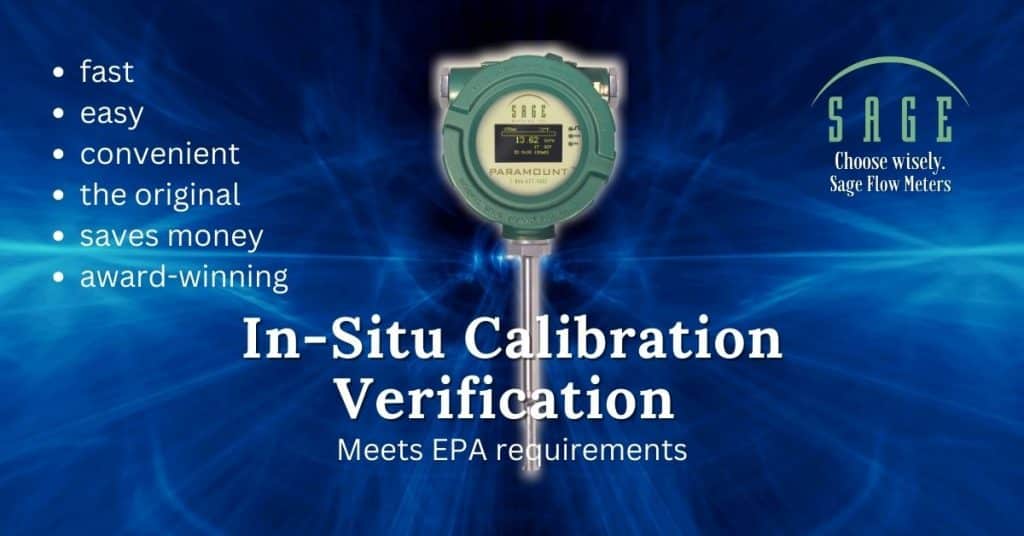Sage Metering’s award-winning in-situ calibration verification satisfies EPA’s mass flow meter calibration protocols and outperforms other manufacturers’ on-site calibration methods.
Initial Mass Flow Meter Calibration

EPA Requires Flowmeter Calibration
There are occasions when the user will want to re-calibrate or verify the calibration of the flow meter. This is especially true when the flow meter is used for carbon credits and must meet established protocols. The EPA also requires calibration verification to meet greenhouse gas emissions reporting requirements per EPA 40 CFR Part 90. For more information, see Sage Metering’s white paper, Greenhouse Gas Emissions Monitoring Using Thermal Mass Flow Meters.
Historically, thermal mass flow meters had to be calibrated on a flow bench. Some thermal mass flow meters today do not have a way of verifying the meter remains in calibration. In these cases, the flowmeters are removed from service and returned for re-calibration, which is costly and time-consuming.
On-Site Calibration Verification
With Sage Metering’s on-site calibration verification, it is possible to verify that the meter is accurate in the field without removing it from service. Sage has developed a simple method to compare the signal of the thermal flow meter under a no-flow condition with the original calibration data. The flow meter calibration has been verified if the actual data matches the calibration data. Furthermore, the user can perform this test without removing the flow meter from the pipe or shutting down the operation. The complete procedure is in the instruction manual and described in the In-Situ Calibration Check brochure.
This procedure is accepted by leading carbon credit protocols and carbon credit management programs as a reliable and repeatable method to check the calibration of Sage flow meters. Read more on Camco Carbon Credit Generation.
Award-Winning Calibration Verification
The award-winning Sage Metering In-Situ Calibration Verification process is unique. It outperforms other manufacturers’ calibration methods, which may require removing the instrument from the pipe or expensive additional hardware. The Sage process also verifies the performance of the electronics and the sensor.
Learn more about this proprietary method and its history on Sage In-Situ Calibration Verification.


